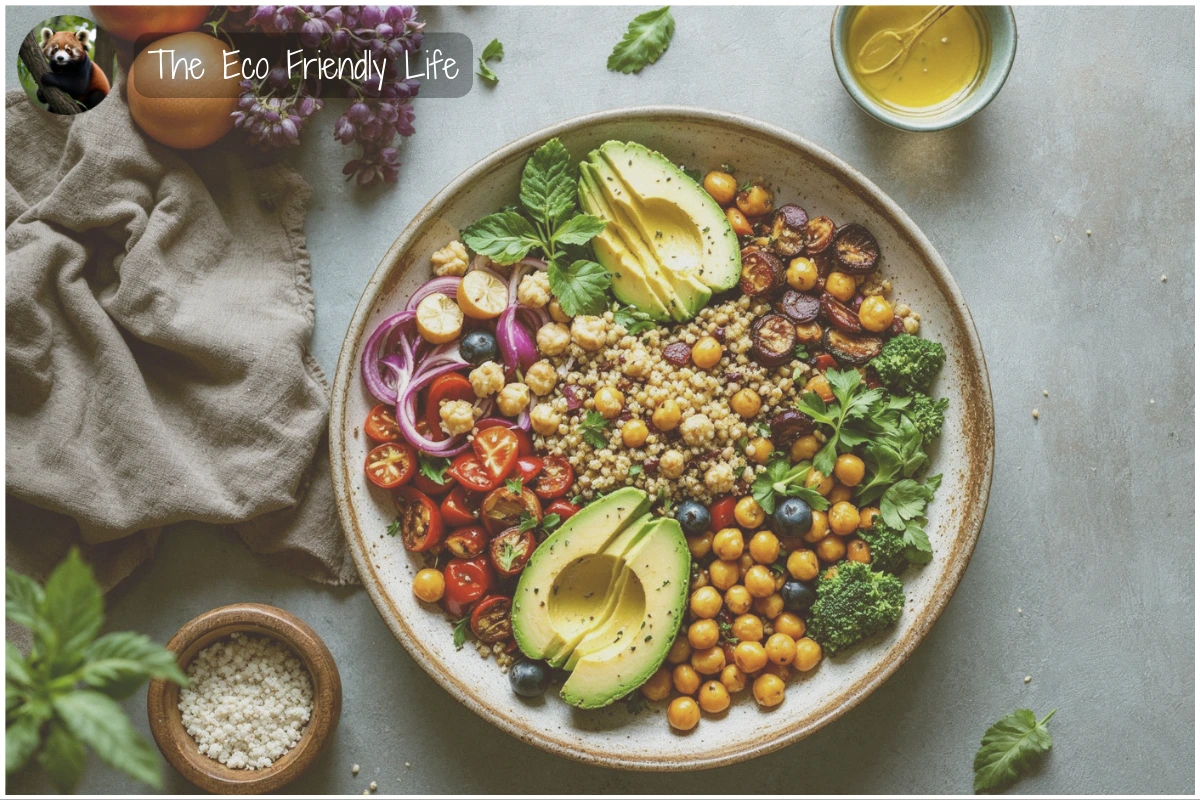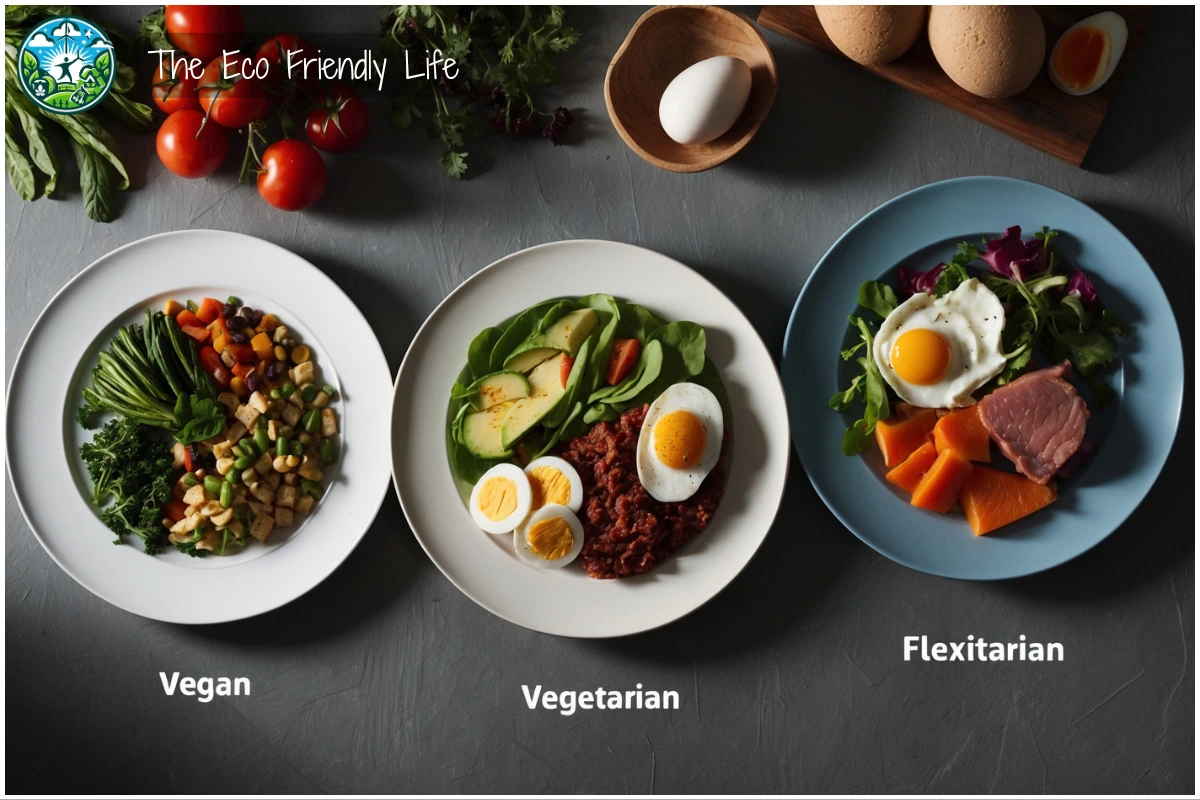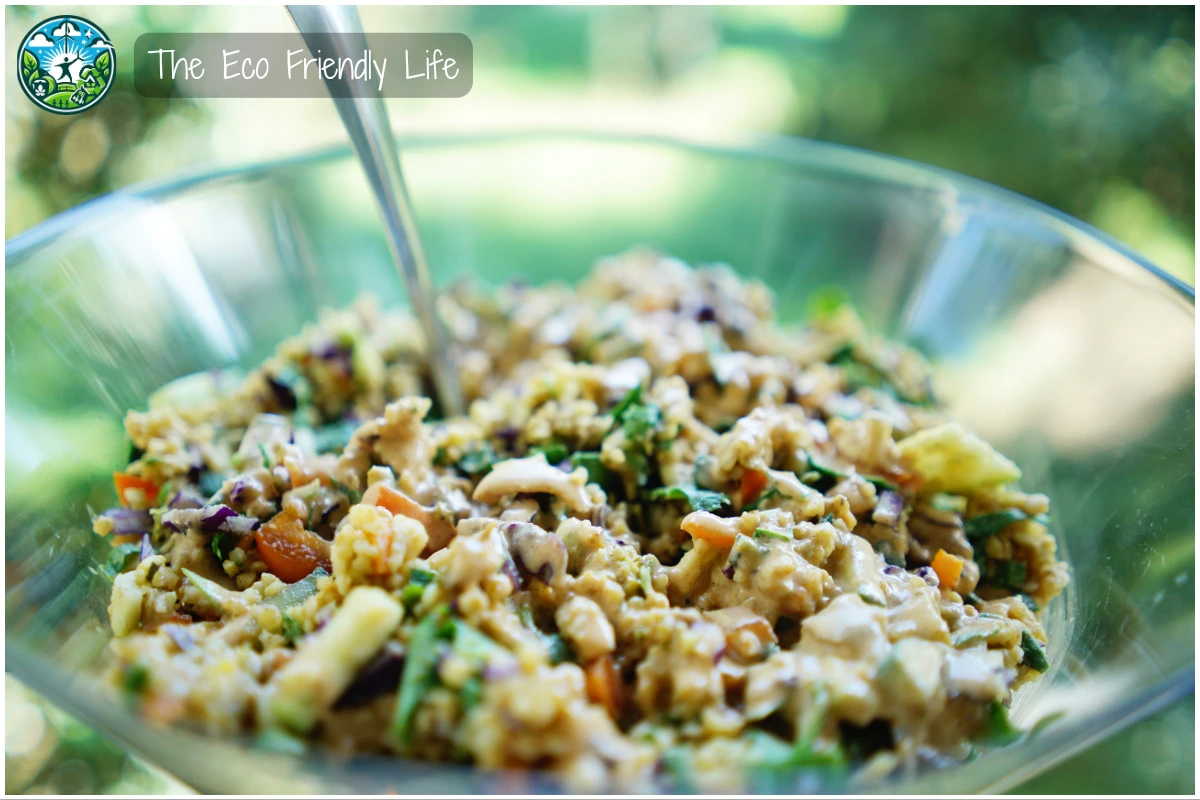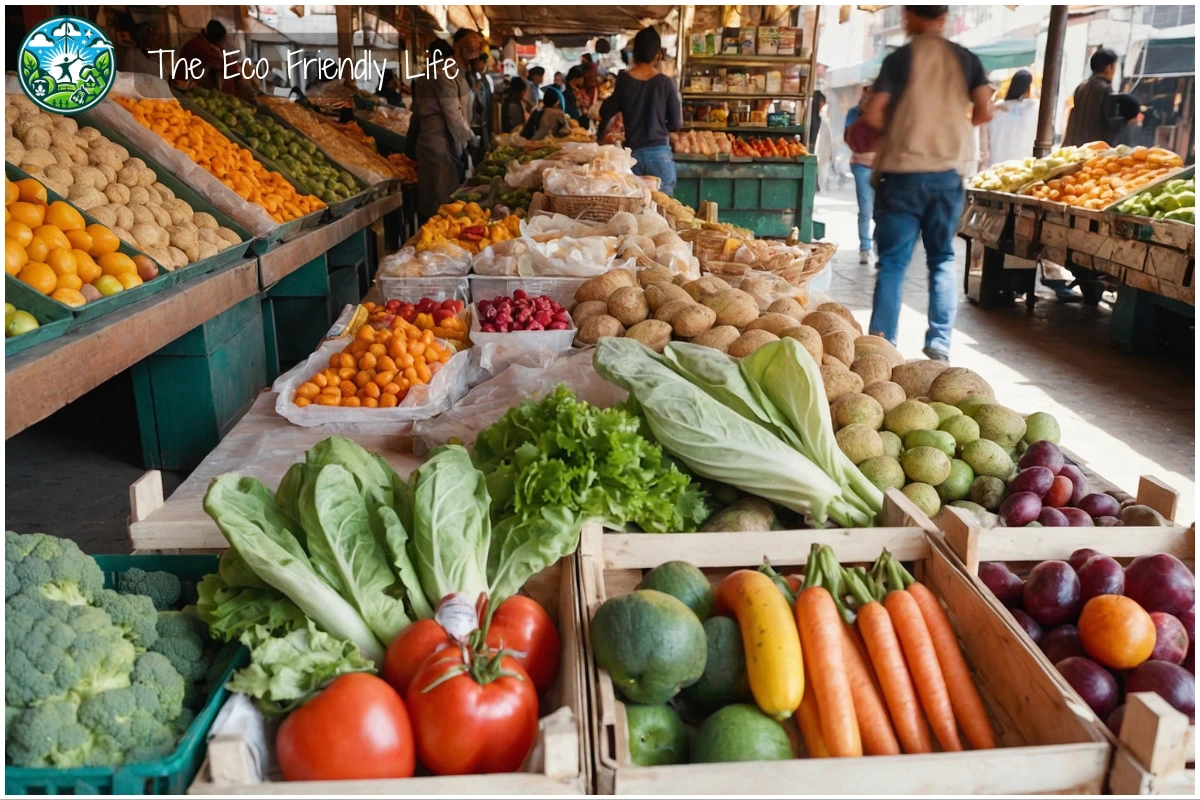Hi, it’s Katrina with you again, and welcome back to The Eco-Friendly Life. Today, we’re diving into how to start on a plant-based diet, which is not only a shift in what you eat but a conscious decision to support your health and the planet. We’ll explore the basics of plant-based diets, the differences between vegan, vegetarian, and flexitarian options, and how they compare to other popular eating plans like keto or paleo.
Together, we’ll uncover the health benefits, essential nutrients to focus on, and practical tips for transitioning to plant-based eating. We’ll also discuss the challenges, from social events to cravings, and the simple ways to navigate them. So, join me as we explore how to embrace this sustainable lifestyle, one delicious plant-based meal at a time!

Understanding Plant-Based Diets
Understand the Basics of Plant-Based Diets: Plant-based diets are becoming increasingly popular, and understanding what they entail is the first step. These diets focus primarily on foods derived from plants. While this sounds straightforward, there are various types of plant-based diets to consider. This section will elaborate on the different kinds and how they compare to other diet types.
Get to Know Vegan and Vegetarian: The vegan diet is the most restrictive form of plant-based eating. Vegans eliminate all animal products, including dairy and eggs. On the other hand, vegetarians exclude meat but may include dairy and eggs in their diet. Flexitarians, or semi-vegetarians, primarily eat a vegetarian diet but occasionally consume meat.

Compare Plant-Based with Other Diets: In contrast, diets like the ketogenic or paleo diets focus heavily on protein and fats, usually derived from animal products. Understanding these distinctions can help clarify the flexibility and variety found within plant-based diets.
Health Benefits Keep You Motivated: Health benefits are a significant motivator for many adopting plant-based diets. This meta-analysis (Frontiers) found that diets rich in whole grains, fruits, and vegetables can significantly reduce cardiovascular disease and mortality risks. However, the analysis also stresses the importance of avoiding highly processed plant-based foods high in sugars, as they can increase cardiovascular risks.
Prioritize Balanced Nutrition for Success: Balanced nutrition is essential to avoid deficiencies often linked to plant-based diets, with protein, vitamin B12, iron, calcium and omega-3, among others, being key nutrients to focus on through foods like beans, lentils, fortified foods or supplements. This study from EPIC-Oxford found that while plant-based diets are lower in saturated fat and higher in fiber, they may require careful planning and supplementation. Consulting a healthcare professional can offer personalized advice and recommendations.
Nutrient-Rich Plant Foods

Enjoy Nutrient-Rich Plant Foods Daily: Focusing on nutrient-rich plant foods is key to thriving on a plant-based diet. These foods not only provide essential vitamins and minerals but also offer variety and flavor. Key plant-based food groups include fruits, vegetables, legumes, nuts, seeds, and whole grains. Each group brings unique benefits to the table, making meal planning diverse and exciting.
Get Your Daily Dose of Veggies: Fruits and vegetables should be a staple in your diet. They’re packed with vitamins, minerals, and antioxidants that support overall health. Think colorful and seasonal produce like berries, leafy greens, and root vegetables. Eating a variety of fruits and vegetables ensures you get a balanced mix of nutrients.
Protein Power from Plant-Based Legumes: Legumes such as beans, lentils, and chickpeas are excellent sources of protein and fiber. They help keep you full longer and support digestive health. These versatile ingredients can be used in salads, soups, stews, and even veggie burgers.
Boost Your Health with Nuts and Seeds: Nuts and seeds, like almonds, chia seeds, and flaxseeds, are nutrient powerhouses. They’re rich in healthy fats, protein, and fiber. Snacking on a handful of nuts or adding seeds to your smoothies or oatmeal can boost your nutrient intake effortlessly.
Whole Grains Are Your Energy Source: Whole grains like quinoa, brown rice, and oats are another essential component. They’re rich in fiber, protein, and B vitamins, supporting sustained energy levels throughout the day. Incorporating whole grains into your diet can range from breakfast porridge to dinner stir-fries.
Here’s a quick reference table to help you identify key plant-based foods and their nutritional benefits.
| Food Group | Examples | Key Nutrients | Health Benefits |
|---|---|---|---|
| Fruits & Vegetables | Berries, leafy greens, root vegetables | Vitamins (C, A), minerals, antioxidants | Boost immune system, reduce inflammation, support heart health |
| Legumes | Beans, lentils, chickpeas | Protein, fiber | Promote digestive health, keep you full longer |
| Nuts & Seeds | Almonds, chia seeds, flaxseeds | Healthy fats, protein, fiber | Support heart health, improve brain function |
| Whole Grains | Quinoa, brown rice, oats | Fiber, B vitamins, protein | Provide sustained energy, improve digestion |
Combining Foods for Plant-Based Proteins: Incorporating protein-rich plant foods is easier than it seems. Beans, lentils, tofu, and quinoa are plant-based protein stars. For example, a hearty lentil soup or a quinoa salad can be both satisfying and nutritious. If you’re worried about meeting your protein needs, remember that combining different plant foods can create complete proteins. A simple example is rice and beans.
Remember, the key to a successful plant-based diet is variety. By rotating different foods and trying new recipes, you’ll not only meet your nutritional needs but also keep your meals exciting and enjoyable.
Transitioning Tips and Common Challenges
Transition Gradually for Better Results: Shifting to a plant-based diet is a journey, and like any journey, a good plan makes all the difference. Start gradually by incorporating one plant-based meal a day. Over time, increase the number of plant-based days each week. This approach allows your palate and digestive system to adapt slowly.
Plan Your Meals for Smooth Transitions: Meal planning is your best ally in maintaining a plant-based diet. Spend some time each week planning meals, preparing ingredients, and even cooking in batches if possible. Having a variety of ready-to-eat meals reduces the temptation to revert to old eating habits.
Navigate Social Events with Confidence: Social situations can be a potential hurdle. Whether it’s a family gathering or a dinner out with friends, navigating these events can be tricky. Plan ahead by checking restaurant menus or offering to bring a plant-based dish to gatherings. This way, you’ll have options that fit your diet while also introducing others to delicious plant-based foods.

Cravings Can Be Managed Easily: Cravings can be another challenge. If you find yourself craving non-plant-based foods, try to identify what you’re actually craving. Is it the texture, flavor, or perhaps a specific nutrient? Find plant-based alternatives that mimic these aspects. For example, if you miss the creaminess of dairy, opt for nut-based cheeses or creamy avocado spreads.
Stay Motivated by Engaging Communities: Maintaining motivation is crucial. Engage with online communities, follow plant-based food bloggers, and join local support groups. Being part of a community where you can share experiences, recipes, and tips can keep you motivated and inspired.
Shopping and Cooking for a Plant-Based Lifestyle
Make Grocery Shopping More Efficient: Practical grocery shopping and cooking make a plant-based lifestyle more manageable and enjoyable. When grocery shopping, focus on the perimeter of the store where fresh produce, whole grains, and legumes are typically found. Aim to fill your cart with a colorful array of fruits and vegetables, whole grains, beans, nuts, and seeds.

Read Labels to Avoid Hidden Ingredients: Reading labels is important. Look out for hidden animal products like gelatin, casein, and whey. Also, be cautious of highly processed plant-based alternatives that may contain excessive sugars, salt, or unhealthy fats. Opt for minimally processed foods that are close to their natural state.
Create a Useful Weekly Shopping List: A good shopping list is invaluable. Plan meals for the week and create a list based on your meal plan. This helps avoid unnecessary purchases and ensures you have everything you need to prepare nutritious meals. Including staples like beans, lentils, tofu, whole grains, and a variety of fresh and frozen vegetables can set you up for successful cooking at home.
Master Plant-Based Cooking Techniques Now: Transitioning to plant-based cooking methods is crucial. Embrace techniques like steaming, roasting, and sautéing to preserve the nutrients in your food. Try experimenting with fresh herbs and spices to enhance flavors. A stir-fry with fresh vegetables, tofu, and a mix of spices can be both delicious and easy to prepare.
Find Inspiration with New Recipes: Exploring new recipes can make meals exciting. There are countless plant-based cookbooks and online resources available. Starting with simple recipes can build confidence in cooking plant-based meals. Think vegetable stir-fries, grain bowls with various toppings, and hearty soups and stews. Involving family members in cooking can also make the process more enjoyable and educational for everyone.
Batch Cooking Makes Life Easier: Batch cooking and meal prepping can save time and ensure you have healthy options ready. Spend a couple of hours on weekends cooking larger quantities of grains, legumes, and roasted vegetables. Store them in the fridge or freezer for quick access during busy weekdays. This practice can also help with portion control and reduce food waste.
Sustainability, Ethical Considerations, and Long-Term Maintenance
Go Green for a Sustainable Future: A plant-based diet is more than a personal health choice; it contributes significantly to environmental sustainability. Aviva Musicus, a postdoctoral research fellow at the Harvard T.H. Chan School of Public Health states in Harvard Magazine “Diets that are good for human health are also good for environmental health. For example, reducing red and processed meat consumption can lower greenhouse gases, reduce irrigation water use, and decrease the amount of nitrogenous fertilizer needed”. Recognizing this, switching to a plant-based diet can be a more eco-conscious lifestyle choice.
Ethical Considerations Support Animal Welfare: Ethical considerations also play a vital role. Many people choose plant-based diets to avoid participating in animal cruelty and exploitation. This ethical stance aligns with broader commitments to humane and responsible living. Embracing plant-based eating can be a way to express compassion and respect for all living beings.
Certifications Can Guide Your Choices: Reading food labels is crucial when shopping for plant-based items. Look for certification labels like ‘Vegan,’ ‘Certified Plant-Based,’ or ‘USDA Organic.’ These labels help identify products that align with your dietary goals. Also, prioritize whole foods over highly processed plant-based alternatives to maximize nutritional benefits and minimize exposure to additives and preservatives.
Community Support Helps You Stay Committed: Joining plant-based communities can offer support and inspiration. Online forums, social media groups, and local meetups can provide a space to share experiences, recipes, and tips. These communities can be invaluable for sustaining your commitment and discovering new ideas.
Track Progress and Stay Adaptable: Long-term maintenance of a plant-based diet involves regular monitoring and adjustments. Pay attention to how your body responds and be willing to tweak your diet as needed. Keeping a food journal can help track nutrient intake and identify any deficiencies. Consult with nutritionists or dietitians periodically to ensure your diet remains balanced and meets all health requirements.
Creating a plant-based lifestyle that’s enjoyable and sustainable requires effort and dedication. With the right strategies in place, it’s entirely possible to thrive on a plant-based diet.
Conclusion
As we conclude this guide to starting a plant-based diet, it’s clear that transitioning to this lifestyle offers numerous benefits for your health and the environment. By incorporating nutrient-rich plant foods and taking gradual steps, you’ll find yourself on the path to a more balanced and fulfilling diet.
We encourage you to take the first step today—whether that’s adding more plant-based meals to your week or experimenting with new ingredients in the kitchen. Each meal choice you make contributes to a more sustainable future for yourself and the planet.
Thank you for joining me in exploring the essentials of plant-based eating. Until our next discussion stay committed to sustainability and try to inspire change!


